The education pack (PDF) can be downloaded here: FGHW education pack
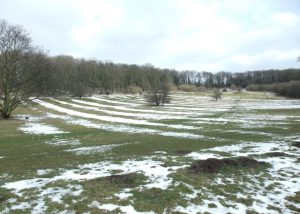 Contents
Contents
Nature of the site
Local Nature Reserve
Woods
Meadows
Location
Aerial view
Map
Access
Visits
Use of the site
Guided visits
Risk assessments
Evaluation forms
History of the site
Early history
18th and 19th Centuries
20th Century
21st Century
Management
Overall Plan
Woodland management
Meadow management
FGHW
Educational activities
English
Mathematics
Science
Art
Geography
History
Species
Birds
Animals
Insects
Trees, wildflowers, grasses and other plants
Gedling House Meadow mix
Nature of the site
Local Nature Reserve
Gedling House Woods was designated as a local nature reserve in 1992. As well as the woods themselves, it now includes semi-improved meadowland that, apart from grazing, has probably been undisturbed for several hundred years. The total site extends to 10.6 hectares (26.2 acres).
The site slopes from north to south making it sheltered and warm. The woodland protects the meadow from prevailing westerly winds and provides further shelter in the lee of the wood.
Woods
In the early 1950s, the wooded area, which was mostly beech, was felled for timber. Unfortunately, the planned replanting did not take place. Since then the woodland area has regenerated itself through colonisation by a mixture of several common tree species. The result has been an area of overpopulated woodland, which constantly needs thinning and replanting. There is a high canopy but little ground level growth but, in the springtime, there are some areas of English bluebell, wood anemone and wild garlic. The woodland part of the site extends to 4.69 hectares (11.6 acres).
Meadows
The meadowland part of the site extends to 5.91 hectares (14.6 acres).The meadows have a long history of being grazed by sheep and horses. Over-grazing by horses in the late 1990s and first years of the new millennium left the meadow in a very poor state.
 The meadow is divided into three parcels, two of which were restored in 2005 and have now become good quality meadowland. This involved some limited re-seeding and the addition of yellow rattle. The third parcel was fully restored in 2014, and is well on the way to regeneration.
The meadow is divided into three parcels, two of which were restored in 2005 and have now become good quality meadowland. This involved some limited re-seeding and the addition of yellow rattle. The third parcel was fully restored in 2014, and is well on the way to regeneration.
Ridge and furrow markings are visible and are particularly noticeable after snowfall when the wind blows the snow off the ridges, showing stripes of deeper snow in the furrows. This suggests field working for crops in the Middle Ages.
Location
Gedling House Woods and Meadowland is situated on the north-eastern boundary of the Nottingham conurbation about 5 miles from Nottingham city centre, in the borough of Gedling. Its Ordnance Survey map reference is SK 626 427. The site is prominent from the A612 Nottingham to Lowdham road.
The site lies just above the flood plain of the river Trent and is about a mile from the river itself.
Aerial view
The aerial view presented here was taken in 2007, before the restoration of the third meadow, but shows the three distinctive parcels of meadowland and the adjoining woodland.
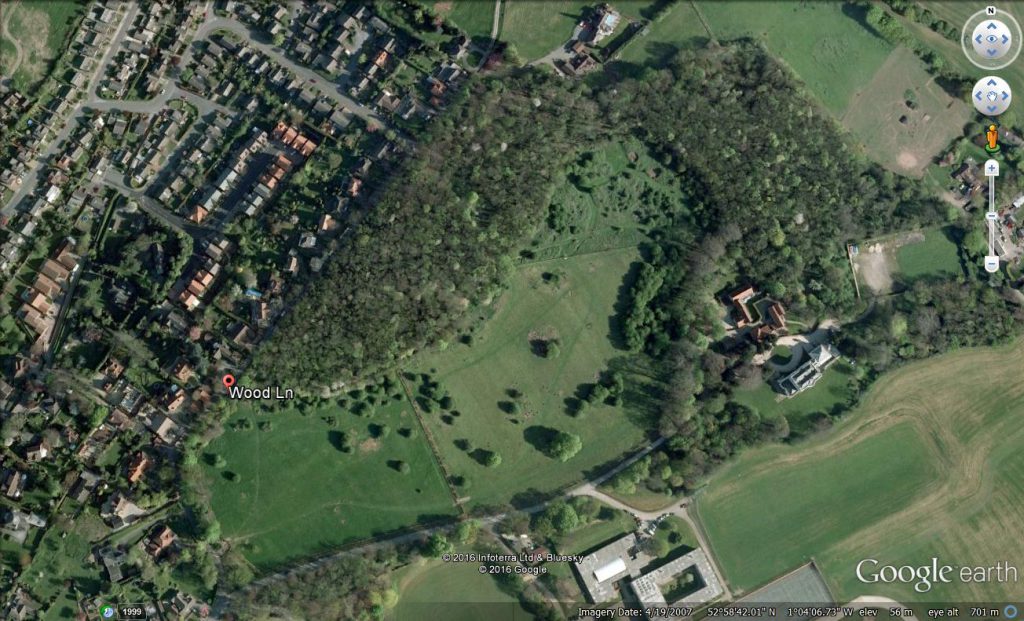
Maps
Map evidence seems to suggest that the boundaries have been virtually unchanged during the last two centuries. A section of the Gedling Enclosure Map of 1794 shows the site of Gedling House, which was awarded to Thomas Smith Esq, towards the lower right-hand corner of the map. Gedling House had not yet been build and Gedling Village is shown to the northeast. The orientation of the two maps below is not the same, but it is possible to locate the current Wood Lane as a dotted path at the north-eastern corner of the site.
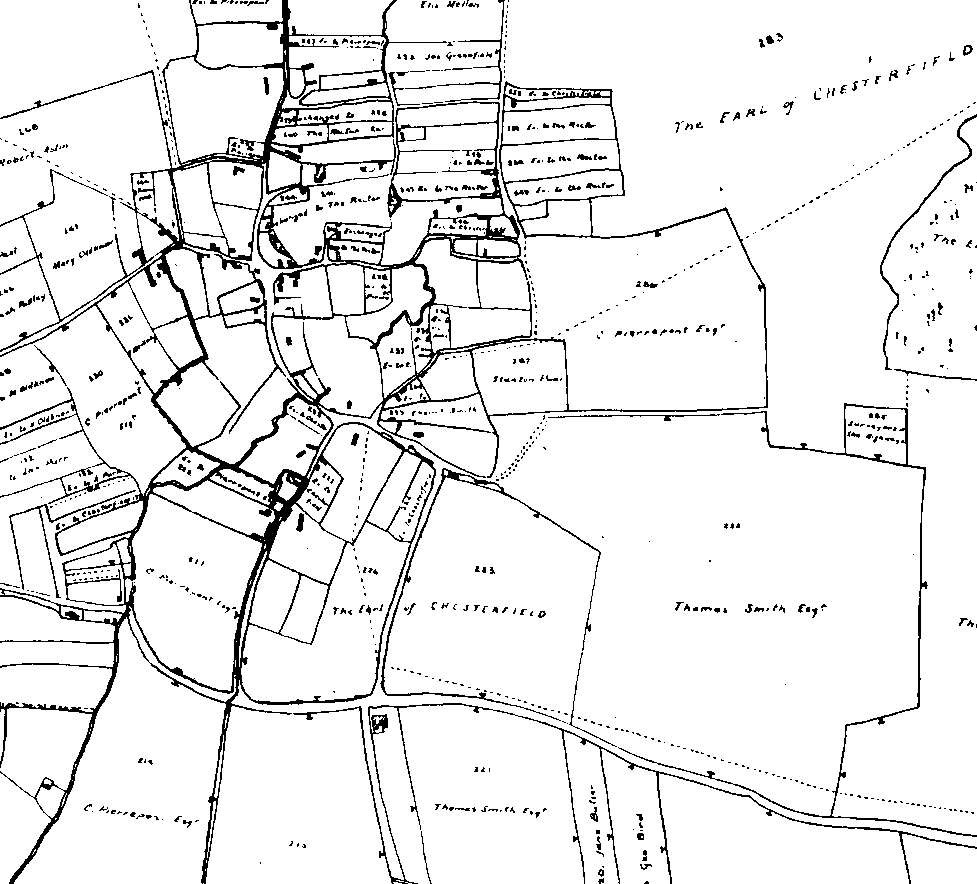
The map below from Natural England shows the two distinct woodland and meadow areas in the local nature reserve.
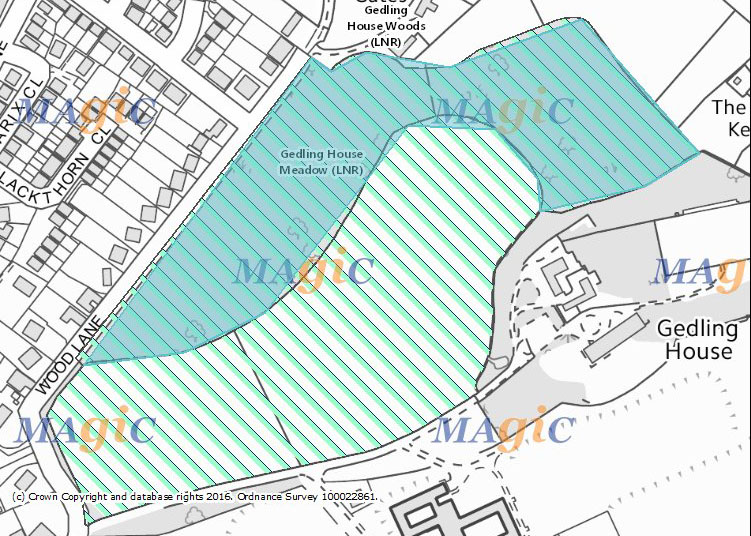
Access
The meadow and woodland are open at all times for visits, with the exception of the very infrequent days when contractors are working in the meadow or woods with machinery. It is therefore best to book a visit with a school group in advance so that any clashes can be resolved.
The address of the woods and meadows is:
Wood Lane,
Gedling
NOTTINGHAM
NG4 4AD
Its Ordnance Survey map reference is SK 626 427.
Main entrance
The main entrance to the woods and meadows is situated on a bend in Wood Lane close to the entrance to Carlton le Willows Academy.
Cars and minibuses: there is no on-site parking, although there is limited parking on Wood Lane below Carlton le Willows Academy near to the main gate to the meadow. Additionally, if the space is not already occupied, there is a small stoned area in front of the main gate, suitable for a minibus or two cars. Note that turning is difficult in Wood Lane, which is narrow and has no pavements at this point.
Buses and coaches: it is not possible to bring coaches or buses close to the meadow because of the low railway bridges and very narrow access roads. Buses and coaches should stop at the junction of Wood Lane with Main Road/Shearing Hill to unload. Visitors then need to walk about 300 metres up Wood Lane to reach the main gate.
Walking: the footpath width up Wood Lane from the railway bridge is narrow and on one side of the road only. For a short distance on the blind bend close to the main entrance there is no footpath. Entrance to the site involves use of a kissing gate.
Second entrance
A second entrance is situated at the top of Yew Tree Lane, close to the upper entrance to the woods on Wood Lane. There is limited parking for cars at the top of Yew Tree Lane. Again, site entrance is through a kissing gate.
Note: The part of Wood Lane adjacent to the site is a private road and visitors should not park in this section of the lane.
Terrain and access within the site
Entrance to all sections within the site is by kissing gate. The site comprises natural woodland and meadowland. Except at the two entrances, pathways are naturally formed and the site has natural hazards, clay banks, clay and grass paths, tree roots and grass clumps.
As in all such sites, woodland paths can be muddy, even when most of the meadow has dried out after rain. Visitors should wear appropriate footwear and clothing.
Note: pre-inspection of the site by group leaders is recommended.
Disabled access
The main gate to the meadow can be unlocked by arrangement to allow wheelchair access to the meadow. The nature of the woodland and its uneven paths means that it is not suitable for wheelchairs, although intrepid explorers might wish to venture a short distance into the woods using the second entrance.
Facilities
There are no toilets on the site, and there is no shelter on the site.
Site management
Gedling House Woods and Meadows are owned by Gedling Borough Council and managed by the Friends of Gedling House Woods.
Visits
Use of the site
Schools and nurseries are welcome to book visits to the site for educational purposes. We suggest that, if you are not familiar with the site, you book a guided visit. Trained Forest School staff are welcome to use the site for forest school activities, but please note that fires are not allowed anywhere on the Gedling House Woods site. FGHW is covered by public liability insurance.
Guided visits
A tour and explanation of the site is available on request. This is free of charge and is bookable by contacting FGHW’s school visits leader and organiser, Mrs Anne Richards (telephone 0115 987 8735). Anne is a former teacher who will support schools in their visits and will arrange a preliminary staff visit if required.
Risk assessments
FGHW has produced a series of risk assessments for the site, one of which applies to visits. FGHW expects that all schools will additionally follow their own procedures to ensure that a risk assessment is undertaken under the school’s safeguarding policy before visiting.
Evaluation forms
FGHW would welcome evaluations of the use of the site to support its agreement with Natural England. The Natural England evaluation form can be downloaded here .
Help with transport costs
FGHW is able to provide some support with transport costs for school that are not within walking distance. We work to the following scale:
| Straight-line distance | EY/Primary pupils (£) | Secondary students (£) |
|---|---|---|
| Up to 1 mile | 0 | 0 |
| Over 1 and up to 2 miles | 50 | 0 |
| Over 2 and up to 10 miles | 50 | 50 |
| Over 2 and up to 10 miles | 100 | 100 |
History of the site
Early history
The site was once part of the great Forest of Sherwood. The area is likely to have witnessed invaders such as the Romans, Vikings and Saxons. Gedling, or Chellinge, as it is known in the Doomsday Book, was a small Saxon village until the Normans arrived. For hundreds of years, the villagers farmed and tended their land, as the ridge and furrow marks throughout Gedling, and in this area in particular, show us.
In later centuries, this area was probably included in what is known as the Thorneywood Chase. Gedling Manor or Gedling Lodge, as it was sometimes known (not to be confused with Gedling House), was a hunting lodge, and was visited by Kings of England who enjoyed the hunting in the area.
18th and 19th century
It is likely that Gedling House was built around the period 1795–1796. The woods and meadows around the house are likely to have been landscaped into broadly their present shape at that time. This was done in the style of the time, with curved boundaries to imitate nature. These can be seen in the boundary between the wood and meadow in the aerial view and on modern maps. The wood was planted with English hardwood species.
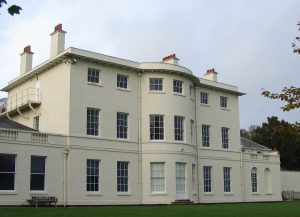 The enclosures of 1794–1796 made significant changes to the village of Gedling. Gedling was a village of up to 400 inhabitants until industry such as coalmining and railways caused a population explosion at the end of the 19th century and in the early decades of the 20th century. Rural Gedling changed forever. This is why this site of meadow and natural woodland is a vital conservation area in the history of this part of Nottinghamshire.
The enclosures of 1794–1796 made significant changes to the village of Gedling. Gedling was a village of up to 400 inhabitants until industry such as coalmining and railways caused a population explosion at the end of the 19th century and in the early decades of the 20th century. Rural Gedling changed forever. This is why this site of meadow and natural woodland is a vital conservation area in the history of this part of Nottinghamshire.
More details of the history of Gedling House can be found here
The plan below shows how the whole site was originally laid out.
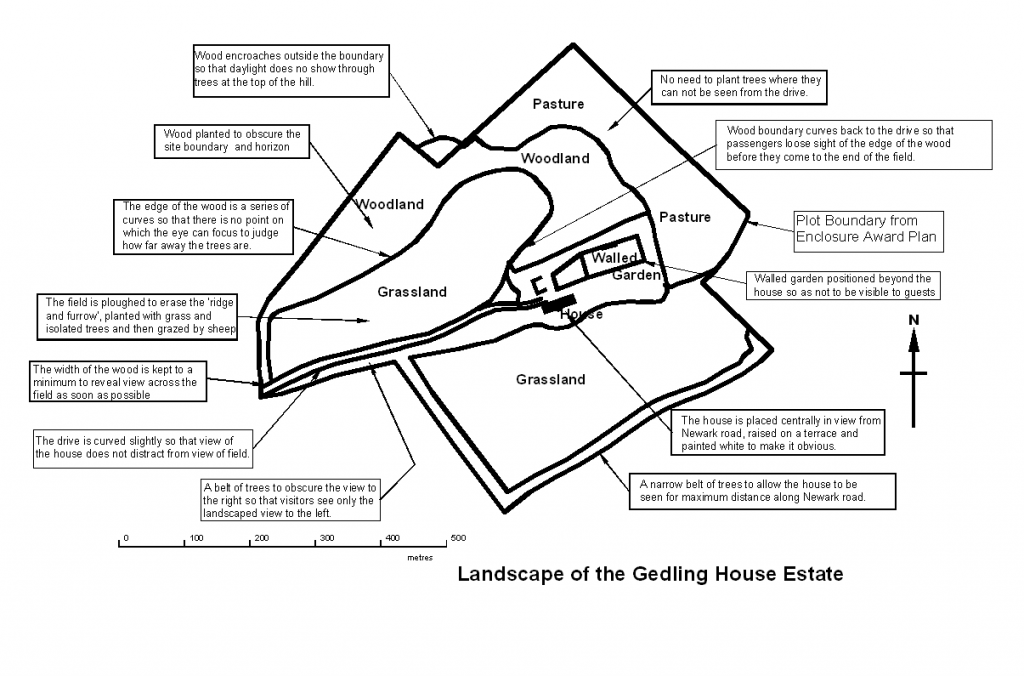
20th century
The woodland and meadowland was in private ownership in the first half of the 20th century until its sale in 1955.
In 1953, the Forestry Commission gave permission to a Major Rawnsley of Leicestershire, the owner of the site at the time, to fell 12 acres of beech and elm trees in the area of Gedling House. The licence indicates that trees were then between 120 and 250 years old. The loss of these trees proved a significant event in this small area of woodland.
Conditions associated with the permission for felling required that “the licence is to be managed in accordance with the rules and practice of good forestry in such a way as to secure its restocking with Sycamore / Beech / Elm by natural regeneration or under planting “. There is no evidence, however, that that the conditions associated with the original felling of the hard wood trees were subsequently followed through. Regeneration was largely through self-seeding and was unmanaged.
In 1955, the owner sold the woodland and meadowland to Carlton Urban District Council, whose role was subsequently assumed by Gedling Borough Council, the present owner, in 1974. The meadowland area was let by both councils for grazing for much of the second half of the century. It was used mostly to graze horses.
In 1991, a short-lived local association was formed to work with Gedling Borough Council to support the management of the wood and meadowland. The woodland part of the site was designated a local nature reserve (LNR) in 1992, with the meadow added in 2007.
Shortly afterwards, in 1993, an area of the meadow was fenced to provide for a grassland meadow. In conjunction with Gedling Borough Council and the local association, the British Trust for Conservation Volunteers (BTCV) undertook some clearing and replanting in the woodland and a limited amount of clearing in the meadow area. BTCV also undertook a substantial programme of fencing and hedging to define boundaries of the woodland.
The local association disbanded in 1996 with Gedling Borough Council remaining responsible for the maintenance of the local nature reserve. The meadowland continued to be grazed by horses and the quality of the meadow deteriorated significantly.
21st century
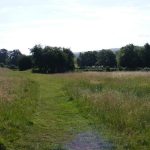 Friends of Gedling House Woods (FGHW) was formed in 2003 by local people interested in ensuring the local nature reserve was used as a nature reserve, rather than for grazing. Friends of Gedling House Woods (FGHW) set up a 20-year contract to manage the woods and meadowland in conjunction with Gedling Borough Council. This was a forward-thinking and unusual step that has been replicated in other areas since. Professional surveys of the whole site led to a management programme for both woodland and meadowland areas. In addition to managing and improving the woods and meadows, FGHW has an important role in communicating a greater awareness of the value of the site to the local community and to local schools.
Friends of Gedling House Woods (FGHW) was formed in 2003 by local people interested in ensuring the local nature reserve was used as a nature reserve, rather than for grazing. Friends of Gedling House Woods (FGHW) set up a 20-year contract to manage the woods and meadowland in conjunction with Gedling Borough Council. This was a forward-thinking and unusual step that has been replicated in other areas since. Professional surveys of the whole site led to a management programme for both woodland and meadowland areas. In addition to managing and improving the woods and meadows, FGHW has an important role in communicating a greater awareness of the value of the site to the local community and to local schools.
A programme to restore the meadowland to its original state began in 2004. Two compartments, now known the first and second meadows were allowed to regenerate, with an area of re-seeding and the introduction of yellow rattle. The meadowland was registered with Natural England in 2004 under a ten-year agreement to support the continued use of the land as a meadow, with some funding to support annual mowing and grazing.
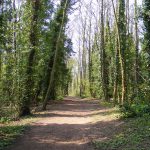 The woodland received considerable attention to remove dead, dying or diseased trees, and some replanting took place to regenerate areas that had little substantial tree growth. Much of the current woodland is self-seeded, however.
The woodland received considerable attention to remove dead, dying or diseased trees, and some replanting took place to regenerate areas that had little substantial tree growth. Much of the current woodland is self-seeded, however.
In 2013, FGHW applied successfully for a Local Improvement Grant from Nottinghamshire County Council. This was used to restore the third meadow element, which had long been invaded by brambles and elder from the woodland border.
In 2014, a new agreement with Natural England was reached for a further 10 years of funding to maintain the meadow and provide opportunities for educational visits. FGHW’s contract with Gedling Borough Council to maintain the site was extended in the same year to end at the same time as the Natural England agreement, in 2024.
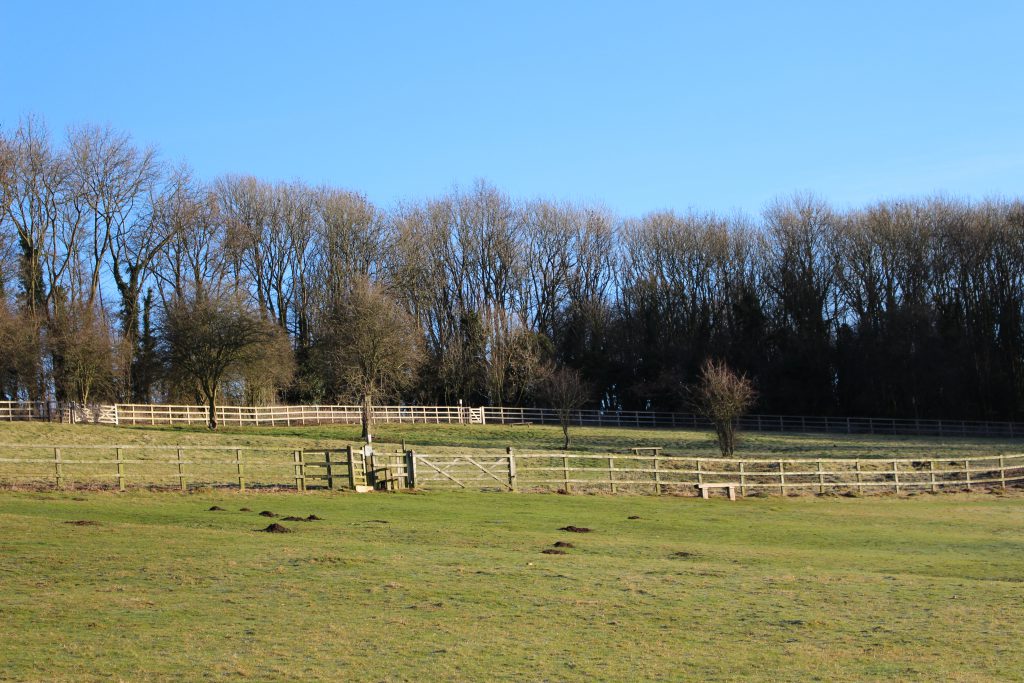
Management
Overall plan
The overall plan for the site is to create a balanced environment that graduates from a fully wooded section, through scrubland and bramble borders on the margins of the woodland, to open meadowland.
Woodland management
An annual cycle of checks on the health and safety of trees takes place in the autumn and any trees that need felling because they are dead, dying or diseased are removed. The trees are left where they are felled to provide a natural environment for insects and other wildlife. All tree work takes place between November and March to avoid disturbing birds nesting or bringing up fledglings.
Some replanting takes place from time to time, and some thinning of trees is done where saplings are growing close together. The hedges are also trimmed mechanically, usually in late winter, to maintain their shape and prevent spreading into the meadows.
Meadow management
Meadows are traditionally used to provide hay for animal feed. FGHW needs to keep unwanted weeds under control by spot-treating individual plants with a permitted weed killer during the early growing season. The meadow is allowed to grow until wildflowers and grasses have set seed, in the late summer, when it is mowed. This takes place at the end of July or August, depending on the weather.
Meadows are best left unfertilised, and so the hay is baled and removed in August. The meadow is then grazed by sheep during the late autumn to reduce the height of the greensward to less than 10 cm. We currently use the flying flock of black Hebridean sheep owned by the Nottinghamshire Wildlife Trust.
FGHW
Friends of Gedling House Woods is a voluntary organisation set up to manage and promote the woods and meadowland. A committee makes key decisions and members volunteer to undertake straightforward tasks that can be done with hand tools. Additionally, we mow a number of paths through the meadow to maintain access as the grass grows longer. FGHW engages contractors to undertake major work such as tree felling and trimming, mowing, baling and removal of hay, and weed killing.
Educational activities
English
- Speaking and listening – a guided tour of the site (see page 8) provides an opportunity for pupils to listen to the story of the site and to question and talk.
- Narrative writing – a visit provides the opportunity to describe the various experiences pupils had, either as a piece of factual writing, or using the environment of the woods or meadows as the location for a piece of fiction.
- Persuasive writing – supporting SMSC as well, pupils might explain why other people might find a visit to the site a worthwhile experience.
- Poetry – pupils might write poetry linked to the site through its environment, activities, the site in all four seasons and their feelings about the site.
- Letter writing – pupils might write a letter to a friend or relative about their visit, or a letter of thanks to the leader of the visit.
Mathematics
- Measurement – linear measurement of leaves, flowers and insects, and estimation of distances, small and large, and measurement and estimation of areas, large and small.
- Statistics – the concept of an average, mean, median or mode.
- Geometry – calculations of heights of trees, perhaps using similar triangles.
Science
- Identification of species – a database for flowers, trees, birds, butterflies and other insects and small mammals.
- Scientific enquiry – the development of observational skills, devising hypotheses, providing evidence to confirm or disprove them .
- Seasonal variation –the changes that take place on the site throughout the four seasons.
- Seed dispersal – methods of seed dispersal and the way plants regenerate themselves.
- The food chain – the interaction between plants, organisms, insects, birds, animals and examining the food chain that links them.
- Natural habitats – how different species make use of the elements of the site to make their homes.
- Climate – the effects of weather on the site.
Art
- Printing – bark rubbing and the use of leaves and other natural surfaces as print surfaces.
- Observation and recording of the colours of the seasons.
- Sketching, drawing and painting – personal sketching and the way different artists might approach painting a scene from the site (for example, Constable, Monet, or Van Gough).
Geography
- Soil samples – analysis of the acidity/alkalinity (pH value) of soil samples and its suitability for different plants.
- Geology –the geological development of the area can be seen from the site’s good views of the Trent Valley.
- Ecology – woodland management, tree management through pollarding and coppicing, and the management of the meadow through mowing, removal of hay and grazing.
- Mapping – a comparison of maps of the site, and images from Google Earth
- Mapping – interpreting maps using contours and symbols.
History
- Medieval farming – examination of evidence of ridge and furrow farming.
- The story of the Medieval ploughman – 22 yards make a chain –10 chains make a furlong (furrow long).
- Use of woods and meadows today and through the ages, including use of wood for houses, ships and fuel.
- The history of Sherwood Forest and the Thorneywood Chase – the grave of the last Keeper of the Thorneywood Chase can be seen in Gedling Churchyard.
Species
Birds
Look out for and identify precisely:
| Wrens | Sparrows | Blue tits | Great tits |
| Woodpeckers | Owls | Goldfinches | Robins |
| Blackbirds |
Animals
Look out for evidence of and identify precisely:
| Rabbits | Mice | Voles | Badgers |
| Foxes | Sheep (if grazing) | Bats |
Insects and other minibeasts
Look out for and identify precisely:
| Ants | Spiders | Bees | Worms |
| Crane flies | Dragonflies | Beetles | Wood lice |
Trees
Look out for and identify precisely:
| Oak | Beech | Ash | Sycamore |
| Elm | Rowan | Hawthorn | Cherry |
| Yew | Holly | Elder | Hazel |
| Birch | Lime |
Wildflowers and grasses
Look out for and identify precisely, depending on season:
| Celandine | Wild garlic | Bluebell | Primrose |
| Buttercup | Daisy | Ox-eye daisy | Speedwell |
| Clover | Yarrow | Dock | Thistle |
| Knapweed | St John’s Wort | Cowslip | Scabious |
| Vetch | Yellow rattle | Plantain | Rough and smooth meadow grasses |
| Crested Dogstail | Yorkshire Fog |
Other plants and fungi
Look out for and identify precisely:
| Ivy | Bramble | Moss | Lichen |
| Mushrooms and other fungi (do not eat) |
Gedling House Meadow mix
This seed mix was used to sow the third (top) meadow in September 2014. Many of the same species can be found in the other two, larger meadows.
70% Grasses
24% Crested Dogstail
8% Meadow Fescue
5% Meadow Foxtail
15% Red Fescue
4% Rough Stalked Meadow Grass
4% Smooth Stalked Meadow Grass
6% Sweet Vernal Grass
4% Yorkshire Fog
30% Wildflowers
1.8% Betony
1.8% Birds Foot Trefoil
0.9% Black Medick
1.9% Common Knapweed
0.9% Common St. John’s Wort
0.8% Cowslip
1.2% Field Scabious
2.2% Lady’s Bedstraw
0.6% Meadow Vetchling
1.8% Meadow Buttercup
0.6% Meadow Cranesbill
1.9% Oxeye Daisy
0.4% Pignut
1.8% Red Clover
1.6% Ribwort Plantain
0.8% Rough Hawkbit
1.8% Selfheal
0.7% Toadflax
1.8% Tufted Vetch
1.4% Wild Carrot
0.9% Yarrow
2.4% Yellow Rattle